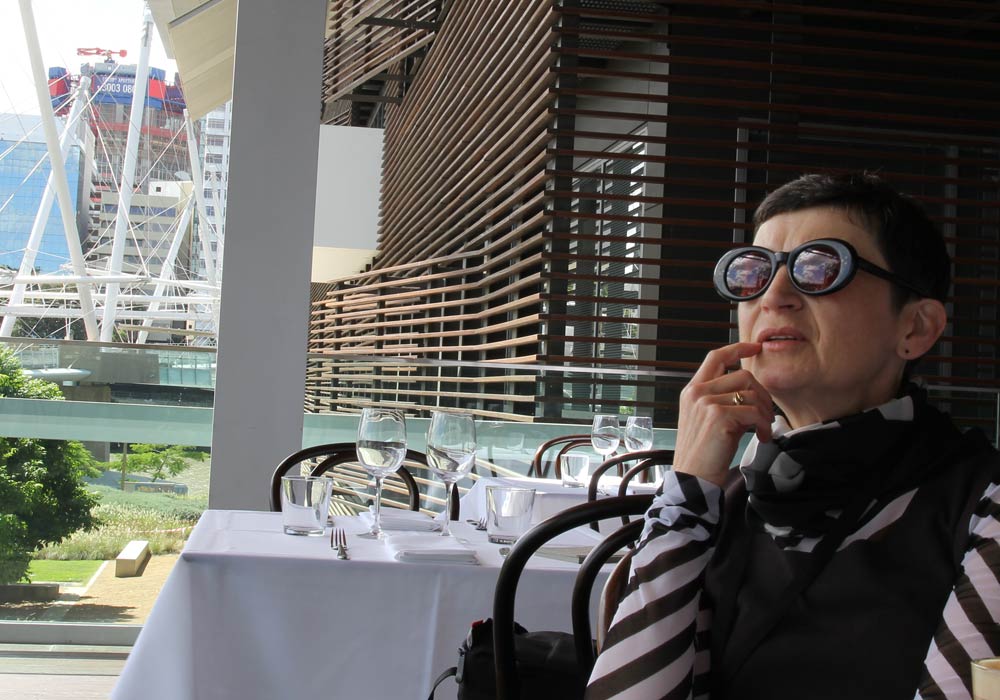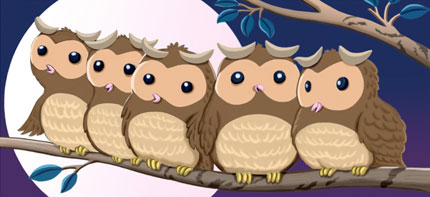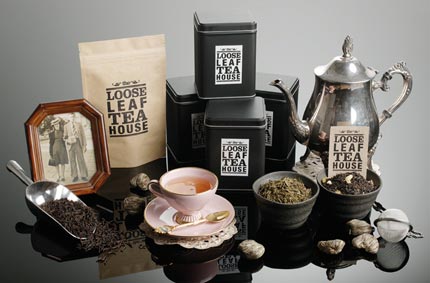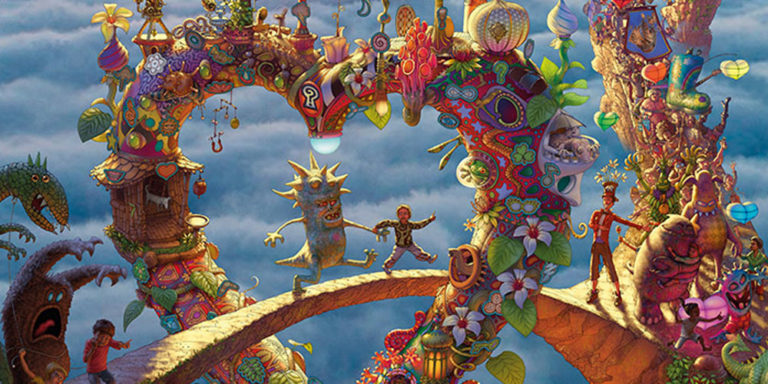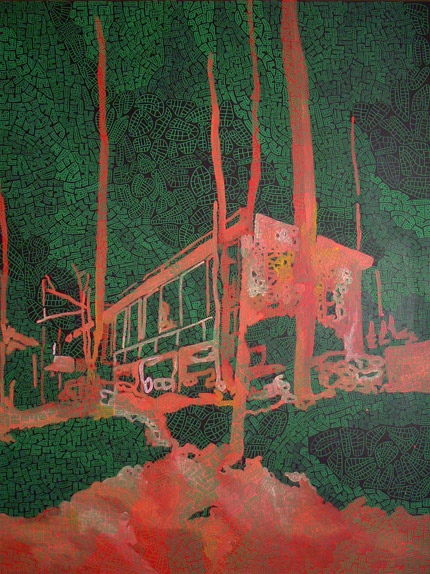Interview with artist Gosia Wlodarczak
For the past couple of months, Gosia Wlodarczak’s installation, Window-Shopping, Frost Drawing for GOMA, has greeted thousands of patrons to Brisbane’s Gallery of Modern Art. The exuberant artwork, is her biggest yet. Over 40 white markers. Over 100 square metres. Completed in 160 hours.
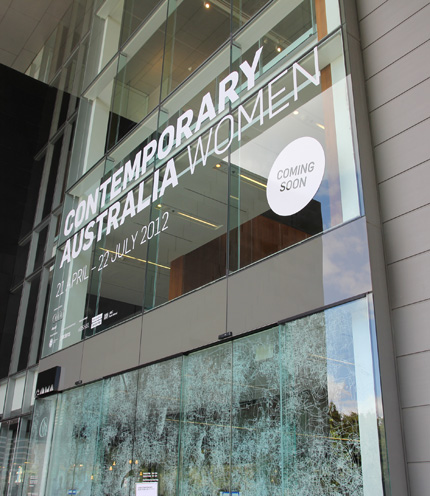
Gosia’s artwork is created in the moment. She observes the people, the conversations, the events around her, and documents this, almost like a visual diary.
Born in Poland, Gosia immigrated to Australia during the 1990’s. After many years living in Perth and expanding her artistic practice, she moved to Melbourne.
In 2008, Gosia extended her artwork to glass installations. Each larger installation larger than the last, and with more and more white markers. Gosia was delighted to be invited to Queensland to take part in GOMA’s Contemporary Australia series.
Now in it’s final days, drop by for a peak at Gosia’s Frost Drawings or to experience some of Australia’s most talented women—inspiring locals, and internationals who now call Australia home.
If you’re in Melbourne, Gosia’s currently completing a new frost drawing installation for the Sofitel Melbourne on Collins as part of a four-week Artist in Residence program. For more information visit her website.
Through a quick interview with Gosia, I asked many questions about her creative practice and how she works live in front of her audience. Here’s a few snippets from our conversation.
How do you describe your frost drawings? Is your practice the finished installation or something else?
This is the work. The making of the drawing is the work.
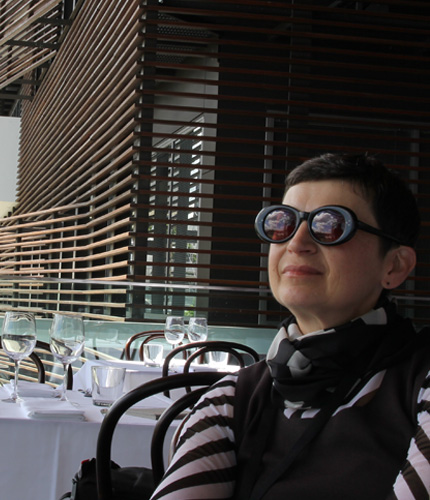
This is the essence of it. And, it’s just fantastic. It’s a surprise. And, there’s such intensity.
How do people respond to you creating art in front of them?
People are fascinated. At first, they watched for long periods of time. In the early stages, especially, I try to incorporate elements of the early viewers into the work.
But now it’s quite hectic, there’s energetic kids all around me. I can feel the excitement and that energy feeds my process. It’s a real collaboration.
Can you describe your process? Or how you go about creating such a large installation?
It’s a very organic process, there’s no structure.
I don’t draw from one vantage point. I move. This is natural behaviour in space. It’s not about presenting what I’m seeing. It’s about recording and archiving the moments in the present time.
It’s a map or testimony of our existence, transformed into line.
Do your feelings at each moment show through in the artwork?

Yes. The style is very unstable. It really depends on my mood. At different times of the day, I create different lines. And the people around can see me in these different frames of mind.
The marks themselves are each very different. It’s really existential. The life is being created by the effects of that around me.
The life is going on the effect of your body and mind.
I can see my moods, my stress, my anxiety.
Do you interact with the people watching you?
People stand and watch. Sometimes they talk. We might converse. It’s all recorded. Sometimes I might still draw while even having eye contact with them. Not portraiture, but it might be just drawing the shape of their eye. A moment here. A moment there. A gaze here or there.
It’s a substance that’s building up through all of these actual moments.
Everything is included, of course.
In the moment, is the process relaxing or is it stressful?
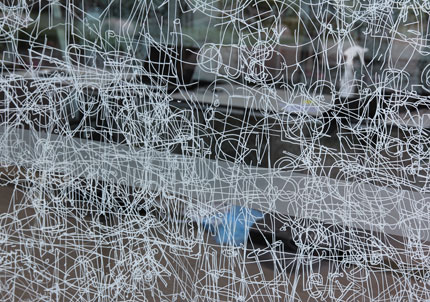
It’s not a meditative process. I’m aware and conscious. I am making a record, so full awareness is needed. I am trying to prove my awareness against the backdrop of everything else around me.
These are my sensory reactions to what’s happening around me. I’m not inspired, as such. I’m just reacting. Reacting to the now.
Would you say that your artwork is a form of visual storytelling?
I don’t pre-design the end or the beginning. It’s usually something else that determines it. The length often determines the time I have for the process. I have from one date until another to capture moments in time.
And how the work looks, I accept it. Whatever I do in that time, I accept. Even if it’s too much, or it looks like not enough—either way, I accept it.
That’s the archive of those hours in my life.

